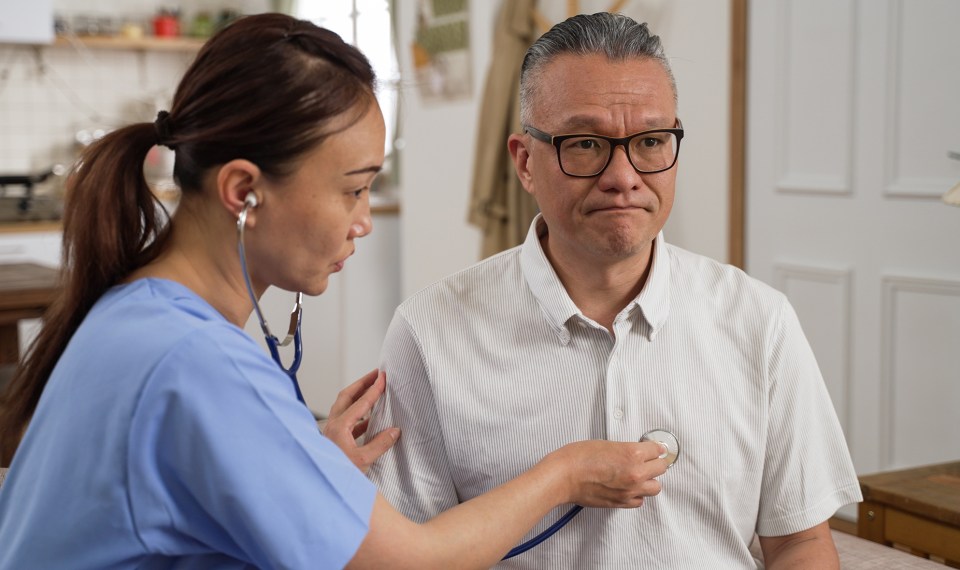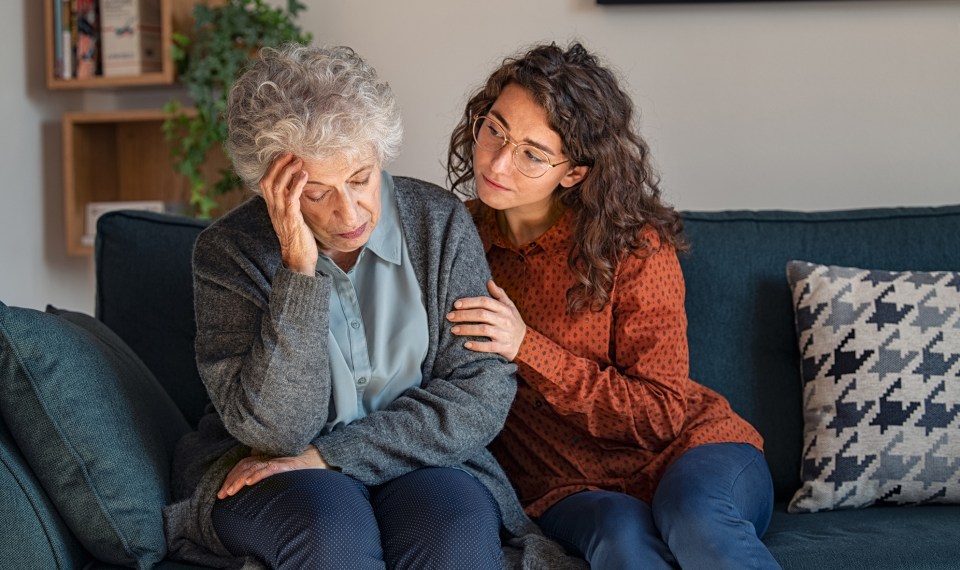Atrial fibrillation (AFib) is the most common type of heart arrhythmia. AFib and stroke are closely related. Those with AFib are five times more likely to have a stroke, and one in seven strokes is caused by AFib.
What Is AFib?
The heart is made up of four chambers, two atria (upper chambers) and two ventricles (lower chambers). The four chambers of the heart work together to produce a heartbeat. The atria pumps blood into the ventricles between the upper and lower chambers while valves prevent the blood from flowing back into the atria. When the ventricles contract, the blood is pushed out of the heart and the aortic and pulmonary valves close. These actions produce the sound of the heartbeat.
In atrial fibrillation, the upper and lower chambers of the heart don’t work together properly, producing an irregular heartbeat, or arrythmia. Instead of contracting normally, the atria make a weak, often rapid, quivering motion that also causes the ventricles to contract abnormally.
AFib and Stroke
The weakened, irregular heartbeat seen in AFib allows blood to pool in the atria, which can lead to clot formation. If a blood clot escapes the heart and travels through the body, it can block an artery causing a stroke.
Symptoms of AFib
AFib doesn’t always produce symptoms. Some people have AFib and experience no symptoms, but when symptoms are present, they include:
- Irregular heartbeat
- Heart palpitations including a fluttering or pounding sensation in the chest
- Lightheadedness or fainting
- Shortness of breath
- Fatigue
- Chest pain
Risk Factors for AFib
Anyone can develop AFib, but there are several factors that increase the risk, including the following:
- Advanced age. The risk of AFib increases substantially with age.
- Obesity. Being overweight increases the incidence, prevalence, severity and progression of AFib.
- High blood pressure. Long term, uncontrolled high blood pressure raises the risk of AFib.
- Heart disease. Those with a history of heart disease are at higher risk of developing the condition, and AFib is the most common complication following heart surgery.
- Moderate to heavy alcohol use has been shown to place individuals at higher risk of AFib.
- Family history. There is a genetic link to AFib. Those with a first-degree family member with AFib have a higher risk of developing the condition.
- Smoking. Current smokers are two times more likely to develop AFib than non-smokers.
- European ancestry. AFib is more common in those of European ancestry than in African Americans.
- Chronic medical conditions such as hyperthyroidism, diabetes, and asthma increase AFib risk.
Goals in Managing AFib
After an AFib diagnosis, it is important to set goals in managing the condition. According to the American Heart Association, this may include:
- Returning the heart to a normal rhythm
- Controlling heart rate
- Preventing blood clots
- Managing or reducing stroke risk factors
- Preventing other heart rhythm issues
- Preventing heart failure
Steps to Reduce AFib Complications
The following lifestyle changes can reduce the risk of complications from Afib:
- Include regular physical activity into your routine
- Follow a heart-healthy diet by reducing sodium, saturated fats, trans fats and cholesterol
- See a doctor for high blood pressure and follow the prescribed regimen for management
- Avoid overuse of alcohol and caffeine
- Stop smoking
- Maintain a healthy weight
Treatment of AFib
The goal of AFib treatment is to restore and maintain a normal heart rhythm and to prevent blood clots from forming in the heart. Treatment options include:
- Medications. Blood thinners and medications to control heart rate and heart rhythm may be prescribed.
- Medical procedures.
- Cardioversion. This is a procedure where an electrical shock is administered under mild anesthesia to reset the heart to normal rhythm.
- Ablation. When medications and cardioversion are not effective or not advised, a minimally invasive ablation procedure may be performed. A catheter is guided through a blood vessel to the heart. The tissue causing the malfunction is then destroyed using radiofrequency laser or cryotherapy, which uses extreme cold to remove abnormal tissues. This results in scarring of the tissue so the abnormal signals can no longer be sent.
- Surgery.
- A pacemaker can be implanted under the skin to maintain a steady heart rhythm. The device detects when the heart is beating too fast or too slow and sends an electrical signal to keep the heart beating at a regular rhythm and speed.
- Open-heart maze procedure. This complex surgery requires a surgeon to make multiple small cuts in the upper part of the heart. The cuts are then stitched together to form scar tissue to block the electrical impulses causing the abnormal rhythm.
Understanding Stroke
Stroke occurs when the arteries that supply blood and oxygen to the heart become blocked (ischemic stroke) or burst (hemorrhagic stroke). AFib increases the risk of ischemic stroke. This emergency situation requires immediate action since brain cells begin to die within minutes, resulting in brain damage, disability or even death. Strokes linked to complications from AFib are often more severe than strokes due to other causes.
Stroke Symptoms
Symptoms of stroke always require immediate medical attention. Call 9-1-1 at the first sign of symptoms. They include the following:
- Sudden numbness or weakness in the face, arm or leg—usually on one side of the body
- Sudden onset of confusion
- Difficulty speaking or understanding
- Sudden difficulty seeing in one or both eyes
- Trouble walking due to dizziness, loss of balance or lack of coordination
- Sudden severe headache with no apparent cause
Atrial fibrillation is a leading cause of ischemic stroke. Early diagnosis of the condition and proper treatment can help in stoke prevention. Managing controllable risk factors and following a prescribed treatment plan can reduce the risk of stroke in those with AFib.
The content of this site is for informational purposes only and should not be taken as professional medical advice. Always seek the advice of your physician or other qualified healthcare provider with any questions you may have regarding any medical conditions or treatments.



